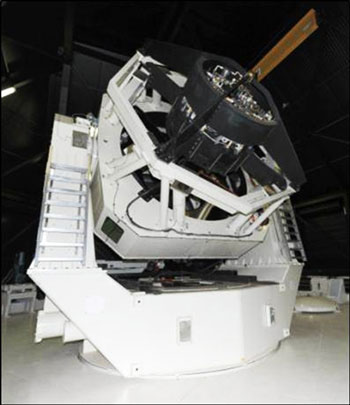| Nov 19, 2012 |
DARPA telescope headed to Australia to help track space debris
|
|
(Nanowerk News) DARPA’s ground-based Space Surveillance Telescope (SST) may soon head to Australia. An agreement reached this week with Australia’s Department of Defense will allow DARPA to take the 180,000 lb. three-mirror Mersenne-Schmidt telescope to Australia to track and catalogues space debris and objects unique to the space above that region of the world that could threaten DoD satellites. In the joint agreement, the U.S. and Australia have decided to work towards the establishment of the Space Surveillance Telescope (SST) on Australian soil.
|
 |
| Space Surveillance Telescope
|
|
SST was developed to detect and track previously unseen small objects at the deep space altitudes associated with geosynchronous orbits (roughly 22,000 miles high). Begun in 2002, SST achieved many technical firsts and advances. Able to search an area in space the size of the United States in seconds, SST uses the first large curved charge coupled device focal array. It currently possesses the steepest primary mirror ever polished allowing the telescope to have the fastest optics of this aperture class. The system is capable of detecting a small laser pointer on top of New York City’s Empire State Building from a distance equal to Miami, Florida. These features combine to provide orders of magnitude improvements in field of view and scanning for deep space surveillance.
|
|
“We value the partnership with Australia that allows us to widen our space situational awareness and share some of our revolutionary technology advances in space surveillance,” said Travis Blake, DARPA program manager. “This technology development effort could benefit both nations as we catalogue and detect entire sets of currently uncharted objects that are in geosynchronous orbit above Australia.”
|
|
SST will feed the data it captures into the Space Surveillance Network, a U.S. Air Force program charged with cataloguing and observing space objects to identify potential near-term collisions with assets in space. The SSN is a worldwide network of 29 space surveillance sensors, including radar and optical telescopes, both military and civilian. DARPA and Australia will also continue to provide deep space surveillance data to NASA for small asteroid detection and to the scientific community.
|

